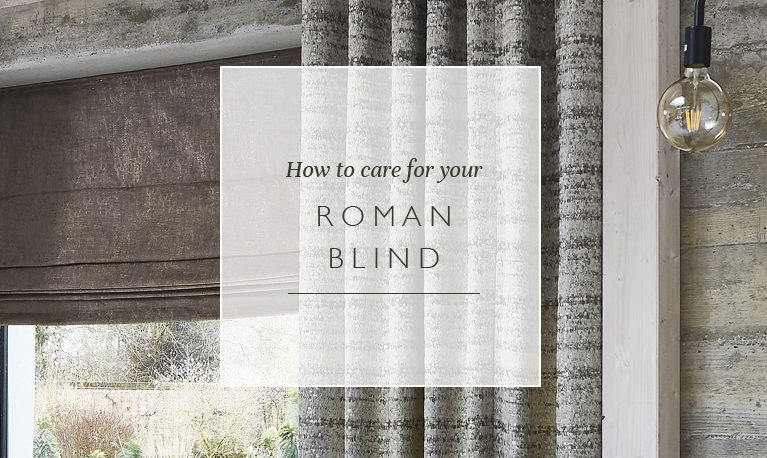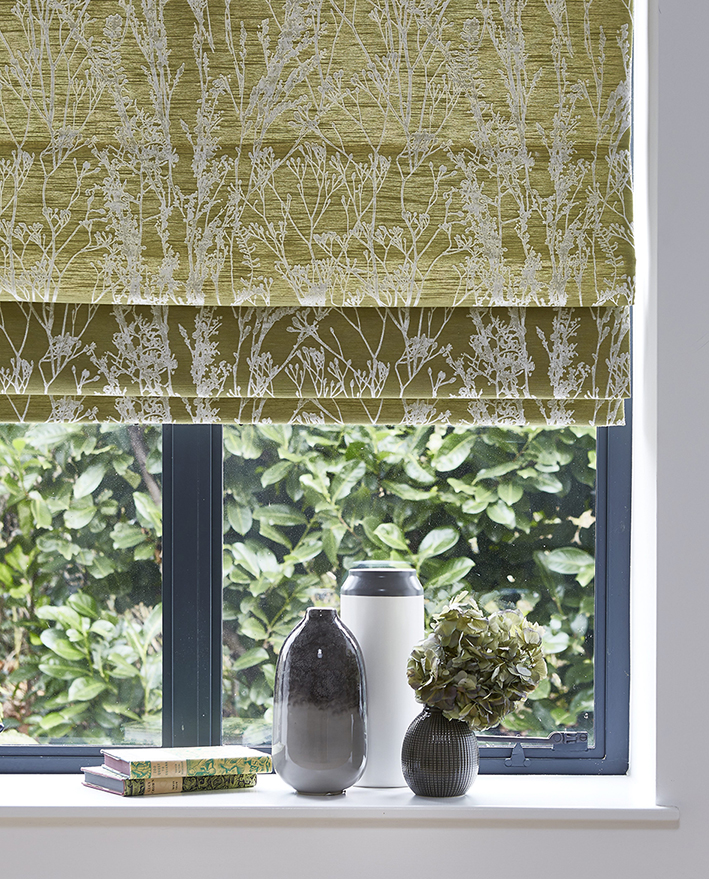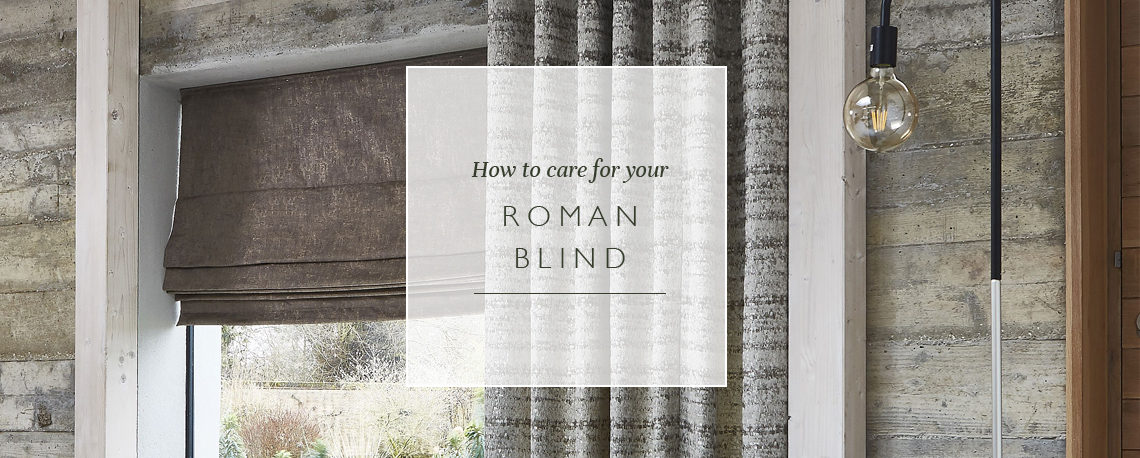
How to care for your Roman blind
Now that you’ve purchased your new Roman blind from Blinds Direct, it’s time to install and enjoy! But it’s important to consider how to care for your blind properly, including hanging, cleaning and maintenance. Find out more in our guide to caring for your new Roman blind…
Which fabric is best for Roman blinds?
Roman blinds are available in various fabrics, with different weights and textures that will create a different look.
Light materials, such as silk, faux silk and taffeta, will create smooth folds, showcasing the delicate sheen of the fabric.
Medium-weight fabrics, such as cotton, linen and similar synthetic blends, are perhaps the best choice for a Roman blind. This is because they are available in a wide choice of colours and prints, so you can select the perfect blind for your space. These medium fabrics also lend very well to the Roman blind mechanism, creating crisp folds that always look neat and tidy.
Heavier fabrics, such as wool, velvet, suede and chenille, may also be used for Roman blinds. Their texture and weight will create a full, luxurious look in your window, as well as performing brilliantly in particularly cold or draughty spaces.

How do I hang and dress my Roman blind properly?
It’s important to hang and dress your Roman blind properly to achieve the best finish. Take your blind out of its packaging and turn over to check all strings are straight on the back. This will ensure your Roman blind raises and lowers properly.
You can now install your Roman blind. Once you have followed our installation instructions, raise your blind gradually with the chain, pausing as each pleat occurs naturally. Now fold along the pleat with your hands, defining the crease and making it more neat. Once your Roman blind is fully raised, place your hand gently inside the top pleat and ensure the fabric is flat inside. If your Roman blind has interlining, give the fabric a little shake to help it drop.
How do I clean my Roman blind?
Your approach to cleaning your Roman blind will depend on the type of fabric. All fabric comes with different advice for cleaning, and if you are ever unsure, you should seek advice from a professional dry cleaner.
Most of the time, to keep your Roman blind looking and functioning well, it will require regular light cleaning.
To remove dust and dirt, use the soft brush attachment and lowest setting on your vacuum cleaner. Open your Roman blind fully and brush the front gently from top to bottom, concentrating on the edges of the fabric, which tend to collect more dust. Do not vacuum the back of your Roman blind as cords may become tangled.
Roman blinds are constructed from soft fabrics, which means stains can be difficult to remove. Do not use stain removers on the fabric as you may notice discolouration. Instead, try baby wipes, which are very effective at removing stains. If your Roman blind is made from silk or faux silk, you should not attempt to clean it at all – instead, speak to a professional.
How do I make my blind smell fresher?
Soft fabrics can often absorb household smells, especially if they’re located near the kitchen. If your Roman blind is starting to smell unpleasant, use shop bought or homemade odour eliminator. You could also try removing your blind and laying it on a flat surface, then sprinkling with baking soda. Leave it for 24 hours, so any odours can be absorbed. Then vacuum up the excess on a low setting.
How do I maintain the Roman blind cord/chain and mechanism?
Grubby or stained blind cords/chains can be cleaned with baby wipes. For the mechanism, try a simple silicone spray and soft cloth, which will remove dirt and prevent squeaking or stiffness.
If your Roman blind mechanism breaks, get in touch with a member of our team and we will look to send you a replacement.
Can I install a Roman blind in my bathroom or kitchen?
Generally, Roman blinds are not suitable for rooms that experience high levels of moisture and humidity, such as bathrooms, utility rooms and kitchens. This is because they aren’t made from wipe clean or moisture resistant fabrics.
However, in some cases, Roman blinds can be a good option. From a practical perspective, choose fabrics that are not susceptible to mould. Be sure to install far forward in the recess, so the blind fabric does not touch any glass or tiles. When it comes to the look of your blind, consider a patterned fabric that is less likely to show up splash marks and stains. Cotton and polyester blends may be the best choice, as there are plenty of colours and prints available, as well as being more durable.
For more tips on caring for different types of blinds, take a look at our ultimate guide for cleaning blinds. You can also discover our full range of made to measure blinds, curtains, cushions and lamp shades at Blinds Direct. Got a question? Get in touch with our team – we’re always happy to help or you can read our Buyers Guide for Roman Blinds for more info.



